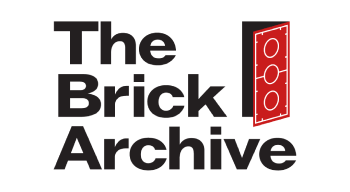There are only a few sources available to us when we want to create a timeline for the mold versions we find.
The public documentation of the LEGO vs Tyco court case gives us a few dates for the technical drawings for the main mold versions. We can assume that these drawings were made shortly prior to the creation of new molds, and we can also assume that these molds were immediately used in the production process. These new molds did not immediately replace all the older molds. The dates known represent the start of a fade in-fade out process where the new brick version gradually replaces the older version.
Sometimes bits of information or photos released by LEGO contain similar gems of knowledge. Confirming small details or providing a new insight which really helps to build a reliable foundation that can be used to support further interpolation and educated guesses.
Another source we can use is sealed set contents. Looking at sets, we have to keep in mind that bricks are moved into storage before they are used in sets. Because there is no expiration date on LEGO bricks, the storage system does not necessarily have to use a first in, first out (FIFO) system. Any 2×4 brick is a 2×4 brick, and it does not really matter when it gets used. Because of that sets can contain multiple mold versions for bricks in different colors, or even for bricks within the same color. Storage is expensive, so for most bricks we can assume that there is not much time between production and packaging. There is a known exception though. The Maersk blue 3001old (2×4 brick without cross-support) were reported in set 10152 (?), years after the change to bricks with cross-support occurred. When using set data, we also have to keep in mind that the production of a set is not limited to a single moment in time. Some sets remain in production for many years. Earlier editions of the set will usually contain older mold versions than later editions of the same set.
Opening nice sealed sets just to look at the mold version of a few bricks is not the best way to make friends among LEGO collectors. Luckily there is an easier option for some sets. If bricks are decorated with a print of sticker we can tell which set they originally came from. Again, we have to keep in mind that there might be a delay caused by the molding – storage – printing – storage – packaging process, but again we can assume that generally the time spend in storage is minimised to save cost. Stickers might be applied to any brick, but I think it is safe to assume that they are applied to the bricks that came with the set in at least 99% of the cases.
As a variation on the printed bricks used in sets, printed bricks are also used as promotional items. Often these bricks can be linked to specific events with known dates.
Finally, we can look at mold markings. The Quattro bricks actually include a date wheel in the mold, but for most bricks we have to use the small details like the stud logo or markings that are included to protect the intellectual property. Sometimes we might be able to date bricks by comparing them with other bricks with “known” production dates. The photos in my Flickr photostream are intended to show those details and make comparisons possible.
All these sources are based on several major assumptions. As a result, dating bricks is not an exact science. By combining the information of as many of the sources as possible we can however get a pretty good general idea of what happened when.
—
The set of bricks shown above is not complete, but by now it contains most of the bricks that I am aware of. It is mainly missing promotional bricks (because they are either unavailable or because they are being sold at scalper prices) and a few recent stickered bricks (because they are not available in the resale market yet).
[Original post and comments on Flickr.]

